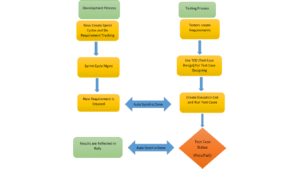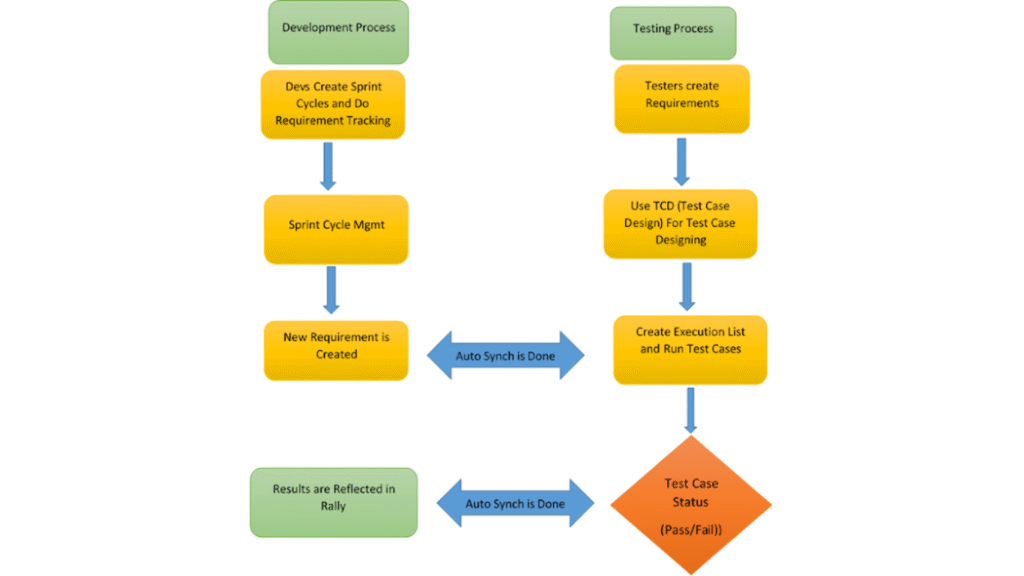In the realm of software testing, Android emulators have become indispensable tools for quality assurance (QA) teams. They allow testers to replicate the behavior of Android devices on desktops, making it easier to ensure that applications function as expected across a variety of Android versions, screen sizes, and device capabilities. This blog post delves into the importance of Android emulators in QA testing, their applications, and how they can be leveraged for effective testing in today’s fast-paced development environments.
At H2K Infosys, we offer Online QA testing training Courses designed to help you master the intricacies of software testing, including hands-on practice with Android emulators. Whether you’re new to quality assurance or an experienced tester looking to expand your skill set, this post will provide you with valuable insights into the role of Android emulators in modern QA processes.
Introduction to Android Emulators in QA Testing
An Android emulator is a virtual device that mimics the hardware and software of a real Android device. By using an emulator, QA testers can run Android apps on their computers, eliminating the need for physical devices. Emulators are critical tools in quality assurance for Android applications, as they allow testers to evaluate app performance across various environments without purchasing multiple devices.
In a QA Testing Training course, you’ll learn how to use these emulators effectively, saving time and resources while ensuring a thorough and robust testing process. Emulators play a pivotal role in QA testing classes, enabling testers to simulate user experiences and debug software in a controlled environment. Check out the Online QA certification course to find the relevant details.
The Importance of Android Emulators in Software Testing
Android emulators offer a wide range of benefits in software testing. Here’s why they are essential:
- Cost-Efficiency: Purchasing multiple physical devices for testing can be prohibitively expensive. Emulators replicate different Android devices without the need for physical hardware, saving costs.
- Scalability: With emulators, you can easily scale your testing process to cover numerous devices with different screen sizes, resolutions, and operating system versions.
- Accessibility: Testers can access emulators remotely or through cloud-based services, making it easier for distributed teams to collaborate.
- Speed and Efficiency: Emulators allow testers to quickly switch between different devices and configurations, speeding up the testing process.
In our Quality Assurance Software Testing Courses, we cover how to integrate Android emulators into your testing framework, ensuring you can leverage their full potential to deliver quality software efficiently.
Types of Android Emulators
There are several types of Android emulators available, each suited for different testing needs:
Android Studio Emulator
- Use Case: Widely used by developers and testers alike, the Android Studio Emulator is Google’s official emulator for Android apps. It supports a variety of Android versions and configurations.
- Advantages: High compatibility, fast performance, and easy integration with other testing tools.
Genymotion
- Use Case: Genymotion is popular for its ease of use and the ability to simulate multiple Android devices on the cloud.
- Advantages: Cloud-based testing, offering scalability and versatility for QA teams.
Bluestacks
- Use Case: Bluestacks is often used for testing gaming applications and high-performance apps due to its powerful virtualization engine.
- Advantages: Supports multiple apps running simultaneously, optimized for performance-heavy applications.
NoxPlayer
- Use Case: NoxPlayer is a lightweight emulator preferred for basic app testing and performance evaluation.
- Advantages: Fast and simple setup, optimized for app testing on low-end devices.
By understanding these types, you can choose the emulator that best suits your testing environment. Our QA software testing course provides hands-on experience with these emulators, ensuring you gain practical knowledge of their applications in real-world testing scenarios.
How Android Emulators Enhance QA Testing
Android emulators significantly enhance the QA testing process by offering the following advantages:
Multi-Device Testing
Emulators enable testers to simulate a wide range of devices with varying screen sizes, operating systems, and performance specifications. This ensures that the application delivers a consistent experience across all Android devices.
Debugging and Error Resolution
Emulators come equipped with powerful debugging tools that allow testers to identify and fix bugs more efficiently. You can simulate network conditions, battery states, and hardware interruptions to ensure the app’s reliability under different conditions.
Automation Testing Compatibility
Android emulators integrate seamlessly with automation tools like Selenium, Appium, and Robotium, allowing testers to automate repetitive tasks and regression testing. These tools are covered extensively in H2K Infosys’ QA testing classes, helping you build a strong foundation in automated testing.
Speed and Flexibility
Since emulators run on desktops, they allow for faster testing cycles compared to physical devices. This is especially beneficial when conducting tests that require frequent iterations, such as continuous integration (CI) pipelines.
Step by Step Guide: Setting Up Android Emulators for Testing
Setting up an Android emulator is straightforward. Here’s a quick guide to get you started:
Step 1: Download Android Studio
- Visit the official Android developer site and download Android Studio, which includes the Android Emulator.
Step 2: Create a Virtual Device (AVD)
- Open Android Studio and navigate to AVD Manager. Select “Create Virtual Device” and choose the device model and configuration that matches your testing needs.
Step 3: Configure the Emulator
- Choose the system image that aligns with your target Android version. You can select from a range of API levels, from older versions like Android 6.0 (Marshmallow) to the latest Android 13.
Step 4: Launch the Emulator
- Once configured, launch the virtual device and begin installing your app for testing.
Step 5: Connect the Emulator to Testing Tools
- If you’re using an automation tool like Appium, connect the emulator by configuring the desired capabilities in your test script.
At H2K Infosys, we provide hands-on guidance on setting up and using Android emulators in our QA software testing course, ensuring you can confidently apply this knowledge in real-world testing projects.
Best Practices for Using Android Emulators in QA Testing
To ensure you’re getting the most out of Android emulators in your QA testing process, follow these best practices:
Test Across Multiple Devices
- Don’t rely on a single emulator. Test across a variety of device configurations (e.g., low-end, mid-range, and high-end devices) to simulate real-world user conditions.
Simulate Realistic Scenarios
- Use emulator features to simulate real-world conditions, such as low battery, varying network speeds, and incoming calls.
Automate Routine Tests
- Leverage emulators for automated regression testing to ensure your application works across multiple device configurations with each update.
Monitor Emulator Performance
- Emulators can sometimes perform differently than physical devices. Always monitor memory and CPU usage to ensure the emulator isn’t affecting test accuracy.
Our Quality assurance software testing courses cover these best practices in-depth, equipping you with the knowledge to conduct thorough and efficient tests using emulators.
Challenges and Limitations of Android Emulators
While emulators provide a range of benefits, they are not without limitations:
Performance Discrepancies
- Emulators may not perfectly replicate the performance of physical devices, particularly when testing high-performance applications such as games.
Limited Hardware Simulation
- Certain hardware components, such as GPS and cameras, may not function exactly as they would on a physical device, limiting the scope of testing.
Compatibility Issues
- While Android emulators cover a wide range of devices, some real-world devices may still exhibit unique bugs or issues that can only be discovered through physical testing.
Despite these challenges, emulators remain a vital tool in the software testing arsenal, particularly when combined with physical device testing. Our QA testing training addresses these limitations and provides strategies to mitigate them.
Case Studies: Successful Implementation of Android Emulators in QA
Case Study 1: Banking App Testing
A leading banking app used Android emulators to test its application across various Android versions, ensuring compatibility with both newer and older devices. By leveraging emulators, the QA team identified bugs that only occurred on older Android versions, enabling them to fix the issues before the app’s launch.
Case Study 2: E-commerce App
An e-commerce app’s QA team used emulators to test different screen resolutions and performance under varying network conditions. Through emulator testing, they improved the app’s user experience on lower-end devices, significantly reducing customer complaints post-launch.
These case studies highlight the versatility and importance of Android emulators in modern software testing. In our QA testing classes, we review real-world examples like these to help students understand the practical applications of emulators in QA.
Conclusion
Android emulators are essential tools in the QA testing process, offering scalability, cost-efficiency, and the ability to simulate real-world conditions. By understanding their applications, setting them up correctly, and following best practices, you can significantly improve the quality and reliability of your Android applications.
At H2K Infosys, our QA testing online training course provides hands-on experience with Android emulators, ensuring you gain the practical skills needed to excel in today’s competitive software testing landscape.
Key Takeaways
- Android emulators offer scalable, cost-effective solutions for testing Android applications across multiple devices and configurations.
- They allow for the simulation of real-world scenarios, such as network variability and device performance.
- Despite some limitations, emulators are a powerful tool when used in conjunction with physical device testing.
- H2K Infosys provides comprehensive QA testing training that includes in-depth coverage of Android emulators, preparing you for success in the software testing industry.
Call to Action: Enroll in QA Testing Training at H2K Infosys
Ready to enhance your QA skills? Enroll in H2K Infosys’ Online QA training course program today. Our courses are designed to give you hands-on experience with industry-leading tools like Android emulators, ensuring you’re equipped to tackle real-world testing challenges. Join now to master the skills needed for a successful career in quality assurance software testing!























